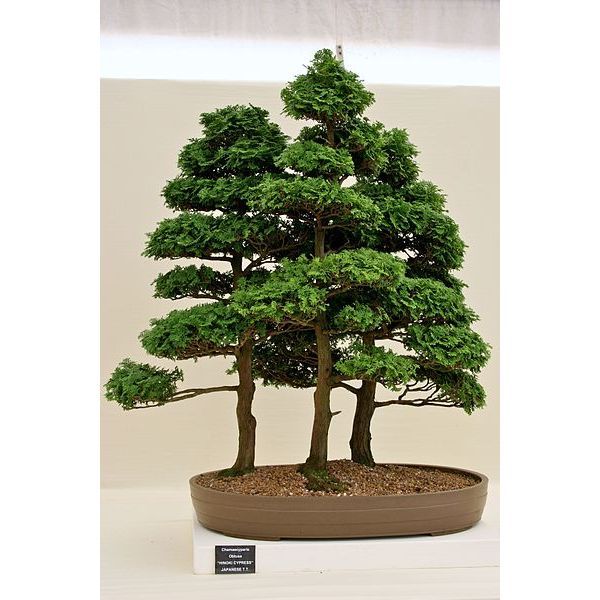Chamaecyparis Obtusa Seeds (Hinoki Cypress)
Chamaecyparis Obtusa Seeds (Hinoki Cypress)
Chamaecyparis obtusa is ideal for a small garden but is very well known to make an ideal bonsai.

Delivery
All orders shipped with UPS Express.
Always free shipping for orders over US $250.
All orders are shipped with a UPS tracking number.
Returns
Items returned within 14 days of their original shipment date in same as new condition will be eligible for a full refund or store credit.
Refunds will be charged back to the original form of payment used for purchase.
Customer is responsible for shipping charges when making returns and shipping/handling fees of original purchase is non-refundable.
All sale items are final purchases.
Help
Give us a shout if you have any other questions and/or concerns.
Email: contact@domain.com
Phone: +1 (23) 456 789
Availability: In stock
SKU
Chamaecyparis Obtusa
Chamaecyparis obtuse, commonly called Hinoki false cypress or Japanese cypress, is a conical-shaped evergreen that is native to Japan.
Hinoki false cypress is a slow-growing tree which grows to 35 m tall with a trunk up to 1 m in diameter.
Chamaecyparis obtusa is ideal for a small garden as a landscape ornemental where it can be grown on in pots for many years. Chamaecyparis obtusa is very well known to make ideal bonsai.
Hinoki wood has been cherished throughout the centuries as a building material for traditional structures such as shrines and temples since it is resistant to rot.
Grow in full sun and in a well-drained soil. Chamaecyparis obtusa tolerates light to dappled shade. It adapts to a variety of soils, from sandy sites to clay. Once established Hinoki false cypress is very drought tolerant.
Hardiness zones: 5-8
| Common name | Hinoki False Cypress, Japanese Cypress |
|---|---|
| Family | Cupressaceae |
| Genus | Chamaecyparis |
| Species | Chamaecyparis obtusa |
| Germination | Prepare planting containers for the Hinoki false cypress seeds once the cold stratification period has ended. Fill 4-inch greenhouse pots with a mixture of 3 parts medium-grit sand, 2 parts loam and 1 part perlite or vermiculite. Saturate the mixture with water, and then let it drain for 15 minutes before sowing. Sow two Hinoki false cypress seeds in each pot. Press the seeds onto the surface of the sand mixture to anchor them. Sprinkle a scant, 1/8-inch-thick layer of sand over the seeds so they are covered but still slightly exposed to the light. Mist the sand heavily to settle it. Place the potted Hinoki false cypress seeds inside a lightly shaded cold frame or on a porch with southern exposure. Warm the pots to 70 degrees Fahrenheit using a germination mat if daytime temperatures stay consistently below 65 degrees Fahrenheit. Maintain constant moisture on the surface of the sand mixture. Mist the pots until the sand feels moderately moist in the top inch. Do not let the sand dry out completely on the surface since the Hinoki false cypress seeds will enter dormancy. Watch for germination in three months, but don't be surprised if many of the seeds take up to two years to sprout. Move the pots with the emerging seedlings to a lightly shaded, sheltered area of the garden to continue growing. Grow the Hinoki false cypress seedlings under light shade during their first summer. Provide 1 inch of water each week with additional water during periods of prolonged heat or drought. Acclimate them to direct sun in late summer. |
| Scarification / Stratification | Soak the Hinoki false cypress seeds in water for 24 hours to hydrate the viable seeds and separate the unviable seeds. Discard any seeds that float to the surface of the. Gather and sow the seeds that sink. Fill a 1-quart sealable plastic bag with moistened sphagnum moss. Fold the seeds in a sheet of paper towel. Tuck the paper towel into the sphagnum moss so it is completely covered. Seal the bag and store it inside the refrigerator for two months. Remoisten the sphagnum moss whenever it is almost dry. |
| Price View | Price Range |

